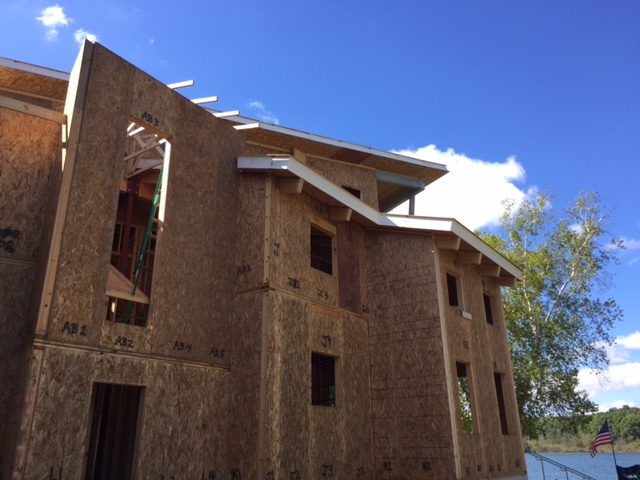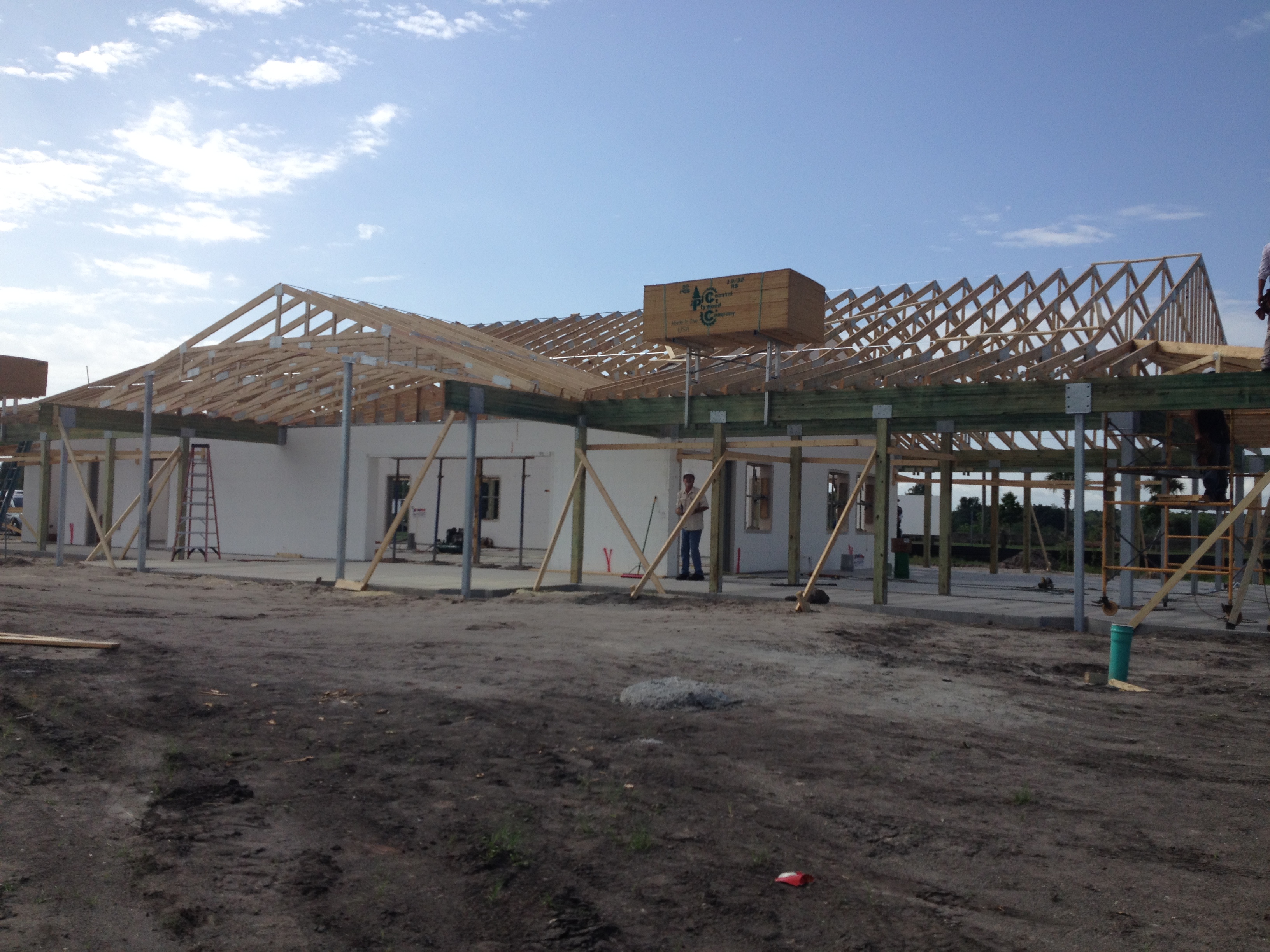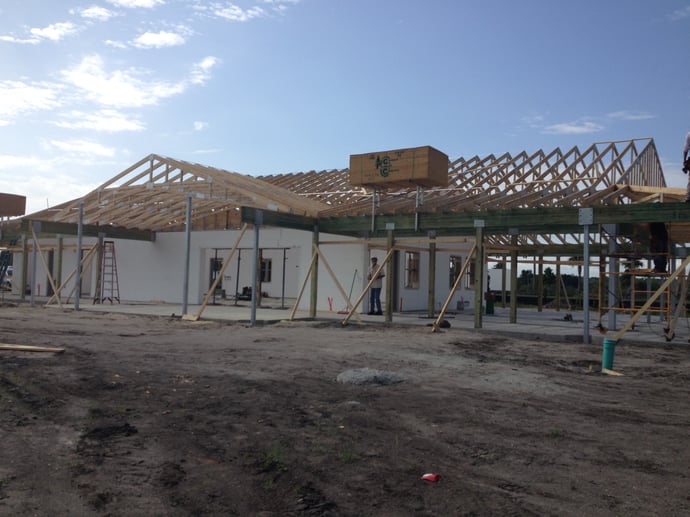More Green Building Materials You Probably Don't Know About
What are some green building materials that many builders are unaware of?
We could probably spend this and several more blogs discussing what green materials actually are, but I will let you decide that, and get on with some of the materials we have been using over the past 15 years in our sustainable design work.
This comes after receiving a lot of great direct feedback from posting this article by Peter Hortsman on the same subject (Must-Have Construction Material Made from Recyclables by Carlson Studio Architecture).
Building materials are constantly being improved or replaced with better materials, and because the modern sustainable building industry in the United States has been around for a couple of decades now, we have great materials that are already proven, and I'm going to share some of those that are a little less commonly known but very good for our planet.
How we got here:
What we have seen, beginning with the launch of the US Green Building Council’s (USGBC) LEED V2.0 green building rating system, is that manufactures are addressing this market sector in so many ways, both for the homeowner and the professional.
For example, back in 2002 when we tried to specify products that recycled content, or low VOC’s, the manufacturer’s themselves did not have that information available to their sales force. More than a decade later, however, this has changed. Now this information is published in all the product specs, and you can even buy sustainable building materials at your local Lowes or Home Depot store.
But educate yourself before you shop, because there is still a lot of green washing out there, and just because a label leads you to believe it's good for the planet, that doesn't mean it actually is!
1. Your Walls
First, let’s look at how we build a wall. Historically, our 2 options have typically been wood-framed (sometimes called stick framed), or concrete block (CMU). Today, however, we have so many more choices that provide a higher performing, proven building envelope, such as:
Insulated Concrete Forms (ICF):
ICFs are over-sized, Styrofoam blocks that get filled with reinforcing steel (rebar) and concrete to create a very strong, tightly sealed, and well-insulated wall system. They will arrive as individual “Lego” style blocks and are assembled on-site. They may also be used for foundation walls if there is a basement. Some examples of ICF systems include:
- Quad-Lock http://www.quadlock.com
- Fox Block http://www.foxblocks.com/
We used Fox Block on our design for the 2009 HGTV Green Home project in Port St. Lucie, Florida.
Structural Insulated Panels (SIPs):
SIPs are a panelized wall system, filled with rigid foam with a skin on both sides of either wood, such as oriented strand board (OSB, is an engineered wood particle board formed by adding adhesives and then compressing layers of wood strands) or an aluminum skin. This wall is also very strong, tightly sealed, and well-insulated.
It is typically manufactured off-site and is delivered as panels already sized and shaped to create the design. (like a 3D puzzle with all the pieces numbered) Our favorite:
- Murus - for more info on SIPs at http://www.murus.com/
We used Murus SIPS on our Birch Haven Residence green building design in Michigan.
Autoclaved Aerated Concrete (AAC):
AACs come in both panels and blocks:
- (see http://www.cement.org/think-harder-concrete-/homes/building-systems/autoclaved-aerated-concrete)
Straw Bale construction (just like it sounds)
Wood Chip Cement:
- forms like Faswall (http://faswall.com), which is a bit like an ICF, but the forms are made of wood chips.
We used AAC panels and blocks on our LEED Gold certified office project, Twin Lakes Park.
Say "no" to particle board:
Particle Board is one of the nastiest things you can put into your office or home. It is full of VOCs, and Urea Formaldehyde. Particle Board can off-gas these chemicals into your home or office for a year after they are installed! There are better options now:
- Skyblend Particle Board is a good option http://www.roseburg.com/Product/skyblend-particleboard/
- Columbia Forest Products http://www.columbiaforestproducts.com/resources/green-products-or-green-standards/# makes plywood, particle boards and veneers that are a healthy alternative to the old particle boards you are familiar with
2. Your Flooring
Flooring is another amazing topic, because there are so many great options available to us, and this is where great strides can be made in your quest for green.
- Bamboo is a rapidly renewable, hardwood flooring system. (You can also make cabinets from bamboo plywood).
- Cork is a wonderful flooring system that is easy on your feet, and soft on the acoustics in the space as well. Cork flooring is available in both commercial and residential grades.
- Carpet tile is a great choice for many reasons. It can be made from recycled materials such as plastic soda bottles. It can be reclaimed at the end of its life and recycled into new carpet, and if an area gets damaged, only the damaged tiles need to be replaced. We use it almost anytime we specify carpet.
3. Everywhere else
So many green materials and so little time… Here are some more materials you may not know about.
- Ceramic tile made with recycled glass
- Spray Foam insulation (instead of using fiberglass batts)
- FSC Certified wood products: Forest Stewardship Council, https://us.fsc.org/en-us
- Greenguard Certified products- http://greenguard.org/en/index.aspx
- Find products at http://productguide.ulenvironment.com/QuickSearch.aspx
- Cradle to Cradle products- http://www.c2ccertified.org/
- Find products at http://www.c2ccertified.org/products/registry
It is not hard to find good green materials. Rely on those good third party, independent agencies to help you along and point you in the right direction. Put your money where your month is and support the companies that make healthy and sustainable products. If your favorite brands are not doing the right thing, ask them to.
There is no need to take a chance on an unproven product these days, unless you enjoy being an early adopter. And, of course, when it is time to design your new home or office, work with an architect that has decades of experience evaluating and using the best green materials in your area.
CONCLUSION:
Green building materials can be many things. Depending on your personal definition, that could mean they are local or regional, they have recycled content, they are easily recycled at end for life, they are non-toxic and low chemical, they conserve water or energy, and I'm sure you can continue adding to that list.
Everyday items that you may not think of as green often have a green option that is readily available. Things like paints, caulks, adhesives, glues, stains, and sealants all have low VOC (Volatile Organic compounds), low toxic, low chemical options. Many are off the shelf. Some you may need to order.
Whatever you do, do everything you can to keep VOCs out of your home and office.
Interested in learning more about how to incorporate green into the build of your next home or commercial building? Set up a free consultation with Carlson Studio Architecture today!




